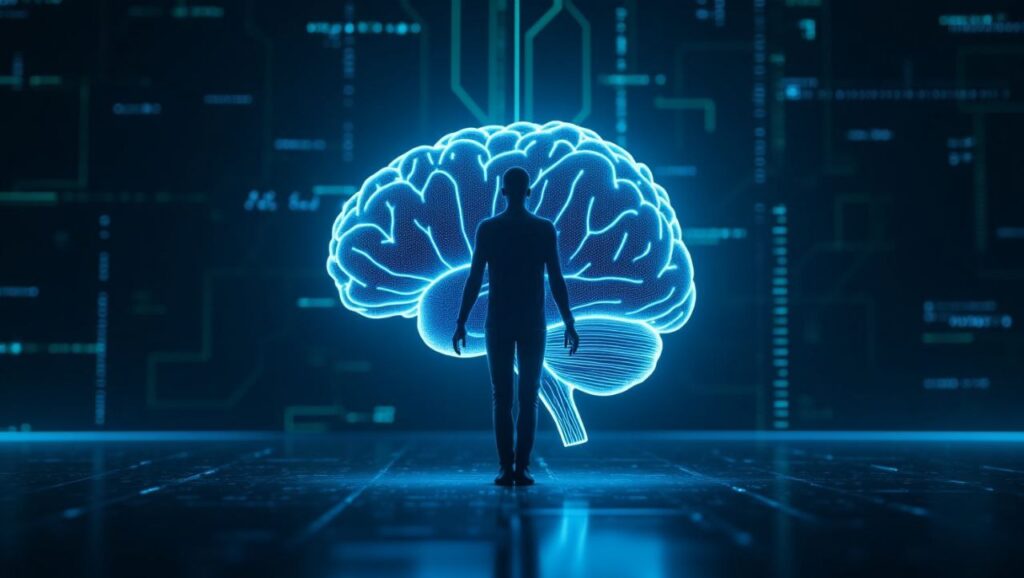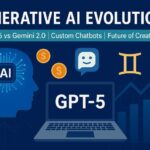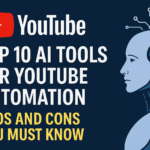GPT-5 and AGI are two terms making headlines today. With OpenAI’s latest launch, the gap between AI and human-level intelligence is closing.
Imagine asking your AI assistant to write a novel, code an app, book your vacation, and give you therapy— all at once— and it actually does it… flawlessly. Welcome to the world of GPT-5 . But is it really the first step toward Artificial General Intelligence (AGI)? Or just another shiny update?

What Is GPT-5—and Why Everyone’s Talking About It
Since its release, GPT-5 has sparked a buzz across the tech world, social media, and even boardroom meetings. OpenAI’s new model claims to be smarter, faster, more adaptable, and frighteningly close to human intelligence. And it’s not just hype. GPT-5 is showing some serious upgrades that are making many wonder—are we witnessing the dawn of AGI?
Let’s unpack what GPT-5 brings to the table, what “AGI-like” really means, and whether we’re actually stepping into sci-fi territory.
GPT-5 vs. GPT-4 – What’s Really Changed?
- Massive Context Window: GPT-5 can remember and process far longer conversations and documents—up to 1 million tokens in some special cases.
- Smarter and More Reasoned Responses: More consistent logic, long-term reasoning, and abstract thinking.
- Tool Use & Autonomy: Can use tools, APIs, web browsing, Python, and delegate tasks like a virtual team member.
- Emotion Recognition & Empathy: Can detect moods, respond empathetically, and carry long conversations with context.
Are These Signs of AGI? Let’s Get Real
What’s AGI Anyway?
Artificial General Intelligence (AGI) means an AI that can perform any intellectual task a human can—reasoning, learning, problem-solving, creativity, and even consciousness.
Signs It’s Getting Close:
- Learning on the fly
- Cross-domain expertise
- Long-term memory
Still Missing AGI Essentials:
- No real consciousness or self-awareness
- Doesn’t update core model in real-time
- Lacks physical interaction or sensory experience
So no, GPT-5 isn’t AGI. But it’s inching dangerously close in functionality.
Real-World Impact: GPT-5 in Action
- Developers: Build apps with just prompts.
- Teachers: Design lessons and assessments.
- Therapists: Early emotional guidance support.
- Entrepreneurs: Brainstorming, pitching, simulations.
What Experts Are Saying
Sam Altman says GPT-5 is the most powerful and helpful yet, but still not AGI.
Elon Musk warns of rapid AI growth and calls for regulations.
Researchers are split—some say “AGI in disguise,” others “just a better parrot.”
The Future Beyond GPT-5
GPT-6 and Beyond – What’s Next?
- Continuous learning from real-time user interaction
- Built-in safety mechanisms to prevent misuse
- Integration with robotics and real-world sensors
Road to AGI – Key Milestones Ahead
- Stable long-term memory
- Sense of agency
- Real-time learning
- Cross-platform embodiment
Should You Be Worried—or Excited?
If you’re a content creator, developer, entrepreneur, or student—GPT-5 is a dream come true. But if you’re worried about jobs, misinformation, or AI overreach—GPT-5 is a wake-up call. As machines become smarter, ethical questions become louder.

Conclusion: The AGI Question Isn’t If, It’s When
GPT-5 might not be AGI, but it’s walking the path toward it—faster than most expected.
It can reason, remember, respond with emotional intelligence, and execute complex tasks. While it lacks true understanding, its utility is near-human in many domains.
The real question now is: Are we ready for AGI, whenever it comes?
Because if GPT-5 is the trailer, the full movie might not be so far away.
Hi, I’m Santu Kanwasi, a passionate blogger with over 2 years of experience in content writing and blogging. I create original, informative, and engaging articles on a wide range of topics including news, trending updates, and more. Writing is not just my profession—it’s my passion. I personally research and write every article to ensure authenticity and value for my readers.
Whether you’re looking for fresh perspectives or reliable updates, my blog is your go-to source!





